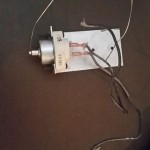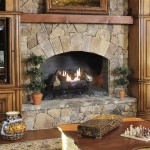Gas Fireplace Design: A Comprehensive Guide
Gas fireplaces have become a popular heating and aesthetic choice for homeowners, offering a blend of convenience, efficiency, and design flexibility. Modern gas fireplace design encompasses a broad range of styles, technologies, and installation options, catering to diverse preferences and architectural needs. Understanding the fundamentals of gas fireplace design is crucial for both selecting the right unit and ensuring a safe and aesthetically pleasing installation.
The allure of gas fireplaces stems from their ease of use – requiring no wood chopping or ash cleanup – and their ability to provide consistent heat with the simple flick of a switch or the press of a button on a remote control. This convenience, coupled with advancements in fireplace technology and design, has made gas fireplaces an attractive alternative to traditional wood-burning models.
Key Design Considerations: Venting Options
One of the most critical factors in gas fireplace design is the venting system. The chosen venting method directly impacts the fireplace's placement, efficiency, and overall cost. There are two primary venting options: direct vent and vent-free.
Direct Vent Fireplaces: These systems vent exhaust gases directly to the outside through a sealed system, typically via a co-axial pipe that draws fresh air from the outside for combustion. This design promotes efficient combustion and prevents indoor air contamination. Direct vent fireplaces offer greater placement flexibility as they can be vented horizontally through a wall or vertically through the roof. They are generally considered the safest and most efficient option. Direct vent systems are suitable for new construction and renovations alike. The sealed combustion system minimizes the risk of carbon monoxide poisoning, making it a safer choice for families.
Vent-Free Fireplaces: Also known as ventless fireplaces, these units do not require an external vent. They burn gas very efficiently, producing minimal emissions. Vent-free fireplaces are often less expensive to install due to the absence of venting requirements. However, they are subject to stricter regulations and may not be permitted in all jurisdictions due to concerns about indoor air quality. Vent-free fireplaces release water vapor and other combustion byproducts into the room, which can potentially lead to moisture buildup and reduced air quality over time. They are typically equipped with oxygen depletion sensors (ODS) that shut off the gas supply if oxygen levels drop too low.
Aesthetic and Style Choices
Gas fireplace design extends far beyond mere functionality; aesthetics play a pivotal role in creating a focal point within a room. A wide array of styles, firebox media, and finishes allow homeowners to personalize their fireplaces to complement their existing decor.
Styles: Gas fireplaces are available in a range of styles, including traditional, contemporary, and linear. Traditional fireplaces often feature ornate details, mantelpieces, and brick or stone surrounds, mimicking the look of classic wood-burning fireplaces. Contemporary fireplaces typically boast clean lines, minimalist designs, and reflective surfaces such as glass or stainless steel. Linear fireplaces, characterized by their long, horizontal flame patterns, are gaining popularity for their modern appeal and ability to create a dramatic visual impact. These linear designs often incorporate features like ribbon burners or multiple burners to achieve a consistent flame across the entire length of the fireplace.
Firebox Media: The material inside the firebox, or firebox media, significantly influences the overall aesthetic. Traditional log sets made from ceramic fiber or refractory materials are designed to mimic the appearance of real wood, creating a realistic fire experience. Alternatively, homeowners can opt for modern options such as glass beads, river stones, or ceramic shards, adding a touch of contemporary flair. Glass beads come in a variety of colors, allowing for further customization. River stones provide a more natural and organic look. Ceramic shards offer a unique and artistic touch, often used in contemporary designs.
Finishes and Surrounds: The fireplace surround and finish further contribute to the overall design. Options range from traditional brick or stone to sleek metal panels and custom-built cabinetry. The surround can be designed to blend seamlessly with the room's existing architecture or to stand out as a bold statement piece. The choice of materials and colors can significantly impact the fireplace's overall visual appeal and its ability to integrate with the surrounding decor. Consider the existing color palette and architectural style of the room when selecting the surround materials and finishes.
Operational Efficiency and Technology
Modern gas fireplaces incorporate advanced technologies to enhance efficiency, convenience, and safety. These features include adjustable flame heights, thermostatic controls, remote operation, and safety shut-off mechanisms.
Adjustable Flame Heights and Thermostatic Controls: The ability to adjust the flame height allows homeowners to control the heat output and energy consumption of their fireplaces. Thermostatic controls maintain a consistent room temperature, preventing overheating and maximizing energy efficiency. These features contribute to a more comfortable and cost-effective heating experience.
Remote Operation and Smart Home Integration: Many gas fireplaces can be operated remotely using a handheld remote control or a smartphone app. This allows homeowners to turn the fireplace on or off, adjust the flame height, and set timers from anywhere in the room or even remotely. Some models also offer integration with smart home systems, enabling voice control and automated operation based on pre-set schedules or environmental conditions.
Safety Features: Safety is paramount in gas fireplace design. All gas fireplaces are equipped with safety shut-off mechanisms that automatically cut off the gas supply in the event of a malfunction, such as a pilot light failure or a gas leak. Oxygen depletion sensors (ODS) are also common, particularly in vent-free models, to prevent carbon monoxide buildup. Regular maintenance and professional inspections are crucial to ensure the continued safe operation of a gas fireplace.

2024 Gas Fireplace Trends Design Regency

Bespoke Gas Fireplace Designs Living Flame

7 Fireplace Surround Ideas That Will Ignite The Room

40 Best Gas Fireplace Designs To Elevate Your Decor In 2024 Design Modern

26 Contemporary Gas Fireplaces Ideas Fireplace
Custom Luxury Gas Fireplace Designs Stellar

Fireplace Design Ideas Exemplar Inspiration On Houzz Montigo

Gas Fireplaces 6000 Modern Kastle Fireplace
.aspx?strip=all)
2024 Gas Fireplace Trends Design Regency

140 Best Gas Fireplaces Ideas Fireplace Design Home Living Room With
Related Posts








